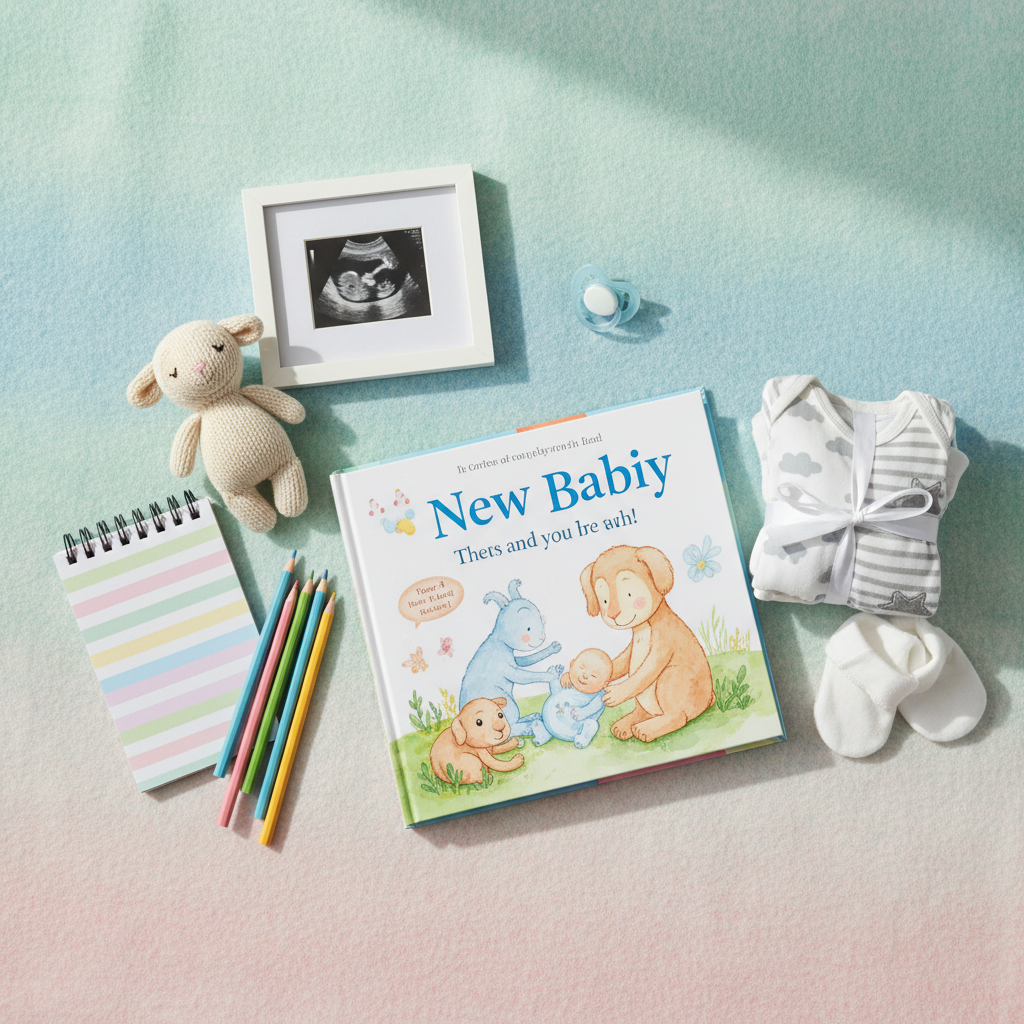
Involving Siblings-to-Be in the Pregnancy Journey
Preparing your child for the arrival of a new sibling is one of the most meaningful parts of pregnancy, especially during the second trimester when your baby bump becomes more visible and the pregnancy feels more real. This transitional time offers the perfect opportunity to begin including your older child in the experience, helping them develop a connection with their future sibling while managing their feelings about this significant family change.
Key Highlights
Here are the essential strategies for preparing your child for a new sibling:
- Timing the news appropriately, generally during the second trimester when the pregnancy is more stable
- Including children in prenatal appointments and letting them hear the baby’s heartbeat
- Using age-appropriate books and resources about becoming a big brother or sister
- Involving children in nursery preparation and baby-related decisions
- Maintaining special one-on-one time with your firstborn throughout the pregnancy
Breaking the Big News

Sharing pregnancy news with your child requires thoughtful timing and approach. The second trimester is often ideal for this conversation, as the pregnancy is more established and your growing bump provides visual reinforcement. Children of different ages will process this news differently—toddlers may have limited understanding, while school-aged children will have more questions about how a new baby will change their lives.
When breaking the news, create a special moment that makes your child feel important and included. Consider saying, “You’re going to be a big brother/sister!” rather than “We’re having a baby,” which centers their new role. Use simple, concrete language and be prepared to answer questions honestly but age-appropriately. Children often wonder where the baby will sleep, what it will eat, and how it will affect their routines—addressing these concerns proactively can ease anxiety.
Making the Pregnancy Real
After sharing the news, look for opportunities to make the pregnancy tangible for your child. If your healthcare provider allows, bringing your child to an ultrasound appointment during the pregnancy headaches second trimester phase can be a magical moment that helps them visualize their sibling. Let them hear the baby’s heartbeat, see ultrasound images, and feel gentle kicks when the baby becomes more active.
Create a calendar that marks important pregnancy milestones, showing how the baby is growing and when it will arrive. Some families take monthly photos of the growing bump with the older child placing their hands on mom’s belly, creating a visual story of their journey together toward siblinghood. These concrete experiences help children process the abstract concept of a baby growing inside mom, gradually preparing them for the reality of a new family member.
Learning Through Stories and Resources

Books are powerful tools for helping children understand and prepare for a new sibling. Age-appropriate stories about becoming a big brother or sister can normalize feelings of excitement, curiosity, and even jealousy. Look for titles that address common concerns like sharing parents’ attention and changes to household routines. Reading these stories together opens conversations about what to expect and validates your child’s emotions.
Beyond books, consider age-appropriate videos, dolls, and pretend play that allow children to practice caring for a baby. Many children benefit from visiting friends with babies or spending time with younger cousins to get a realistic sense of what babies are like. According to child development experts, these experiences during the second trimester provide opportunities to model gentle touching, quiet voices, and appropriate interaction with infants.
Creating Ownership Through Involvement
Children who feel actively involved in pregnancy preparations are more likely to develop positive feelings about their new sibling. Invite your child to help prepare the nursery by selecting colors, arranging furniture (as appropriate for their age), or creating artwork for the baby’s room. This involvement creates a sense of investment in the baby’s arrival and helps children feel valued as contributors to family changes.
Consider ways to give your child decision-making opportunities, such as helping choose between two acceptable baby outfits or suggesting names for your consideration. For families planning creative gender reveal ideas, involving siblings in the planning or execution can create special memories. These collaborative activities shift the narrative from “mom and dad’s baby” to “our family’s baby,” fostering a sense of connection before birth.
Building the Helper Mindset

Preparing children for a helpful role with the new baby builds confidence and reduces potential rivalry. During the 2nd trimester, begin identifying age-appropriate tasks your child might perform after the baby arrives. Even very young children can fetch diapers or help choose the baby’s clothes, while older children might assist with more complex tasks like preparing bottles or entertaining the baby during tummy time.
Role-play these helper activities with a doll or stuffed animal, praising your child’s gentle handling and caring actions. Talk specifically about how babies need our help and protection because they’re small and still learning. This framing helps children see themselves as important protectors rather than competitors for attention. Many parents find that during the 2nd month pregnancy and beyond, this helper mindset develops more naturally when children feel secure in their relationship with parents.
Maintaining Your First Child’s World
While preparing for a new baby, it’s crucial to maintain stability in your firstborn’s routine and relationship with you. Children thrive on predictability, especially during times of change. If your child will need to move rooms or transition to a “big kid bed” to accommodate the baby, make these changes well in advance of the birth so they’re not directly associated with the new sibling’s arrival.
Schedule regular one-on-one time with your child during pregnancy, creating special rituals that can continue after the baby arrives. This dedicated attention reassures children that while family dynamics will shift, their place in your heart remains secure. When discussing the baby’s arrival, acknowledge that while some things will change, the most important things—like your love for them—never will. These conversations during the second trimester lay groundwork for a smoother transition when the baby arrives.
Preparing for a Positive Sibling Relationship
The foundation you build during pregnancy significantly influences how siblings will relate to each other after birth. By consistently involving your older child, validating their feelings, and emphasizing their important role, you’re setting the stage for a positive sibling bond. Remember that adjustment takes time—even well-prepared children may experience complex emotions when the baby actually arrives.
Your thoughtful preparation during pregnancy doesn’t guarantee a seamless transition, but it does provide your child with tools and language to navigate this significant life change. By balancing excitement about the new baby with continued attention to your firstborn’s needs and feelings, you’re teaching valuable lessons about family relationships that will benefit everyone as your family grows.
Sources
Zero to Three: Helping Your Child Adjust to a New Sibling
American Academy of Pediatrics: Preparing Your Family for a New Baby
Raising Children Network: Preparing for a New Baby
